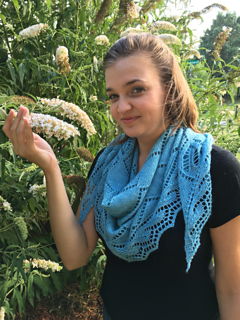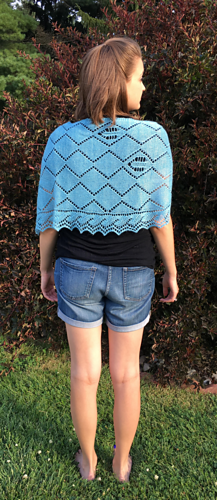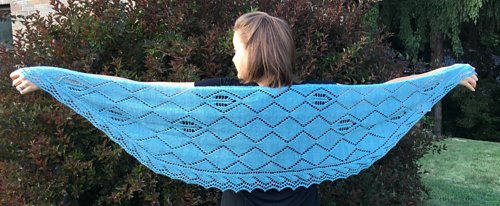patterns >  Kokoro Patterns
Kokoro Patterns
> Morvarch





Morvarch
Morvarch is a stallion from Breton legend who could gallop on water and breathe fire. He is said to have served the great magician Malgven, Queen of the North, and to have carried her across the sea after she broke King Gradlon’s siege.
Our Morvarch is a tapered shawlette that uses simple lace motifs to depict the wake of Marvarch’s hoof prints on the sea. The shawlette is worked end-to-end in one piece, and it can be lengthened or shortened to accommodate variations in yardage. The edge of cresting waves is worked at the same time as the body. Knit in a luscious blend of alpaca, silk, and linen that feels amazing on the hands and needles, the shawlette is light enough for summer wear but warm enough to provide protection from an ocean breeze.
Yarn: 1 skein of Why Knot Fibers SEDUCTION, in Robin’s Egg; or approximately 425 yards of fingering weight yarn.
Gauge: 22 s. and 29 r. to 4” produces a beautiful fabric in the recommended yarn. The pattern can accommodate a wide range of other gauges, but the resulting shawlette may vary from the dimensions and yardage listed here.
Needles: size 6 (4.0 mm).
Techniques: One pair of short rows are worked for every repeat of the edging, to create the extra fabric needed to curve around the tapered ends of the shawlette.
Historical Accuracy: Despite diligent research, the designer is aware of no official record of Morvarch’s actual gait while galloping on water. Candor requires the designer to note that the pattern places his hoof prints in a rotary gallop, which is a standard gait for carnivores, instead of the transverse gallop, which is much more common among equines. But extrapolating from the fire-breathing and water-walking, the designer felt it appropriate to distinguish Morvarch with the faster rotary gallop. Those with contrary information, or those hoping to depict the gait of a non-fire-breathing horse (or other hooved beast), are welcome to reorganize the hoof prints as they see fit.
57 projects
stashed
82 times
- First published: August 2016
- Page created: August 22, 2016
- Last updated: August 22, 2016 …
- visits in the last 24 hours
- visitors right now




